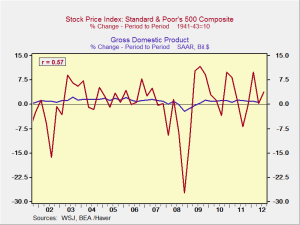The papers today are all about elections, and with five days to go, both sides are pushing as hard as they can. Group dynamics are one focus—women had their day in the sun last week; this week, it seems to be Latinos, per the front-page story in the Wall Street Journal (WSJ), “Election May Hinge on Latino Turnout.”
The focus also continues to be on the swing states, where Obama still seems to have an edge. The WSJ has “Polls: Obama Ahead in 3 Key States” on page A9, the Financial Times (FT) has “Obama and Romney vie for every last vote in a handful of states” on page 4, and the New York Times (NYT) has a good explanation of the situation from Nate Silver on page A12: “When State Polls Differ from National Polls” lays out the pros and cons of how his models incorporate both. Bottom line from Silver is that Obama probably has a sustainable national lead, on top of the lead reported in swing states, and that, based on his numbers, a Romney popular vote win and an Obama Electoral College win seems unlikely.





